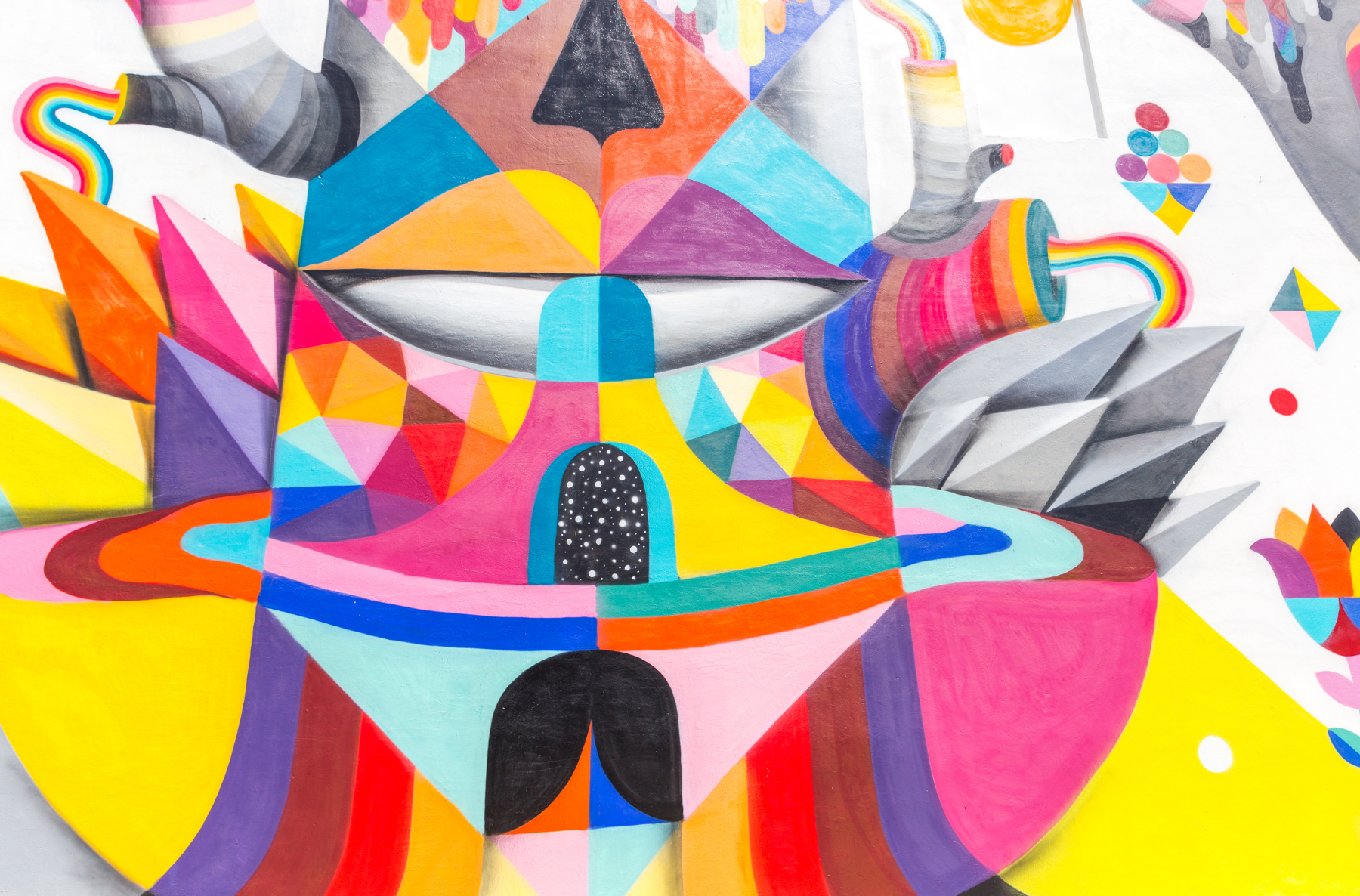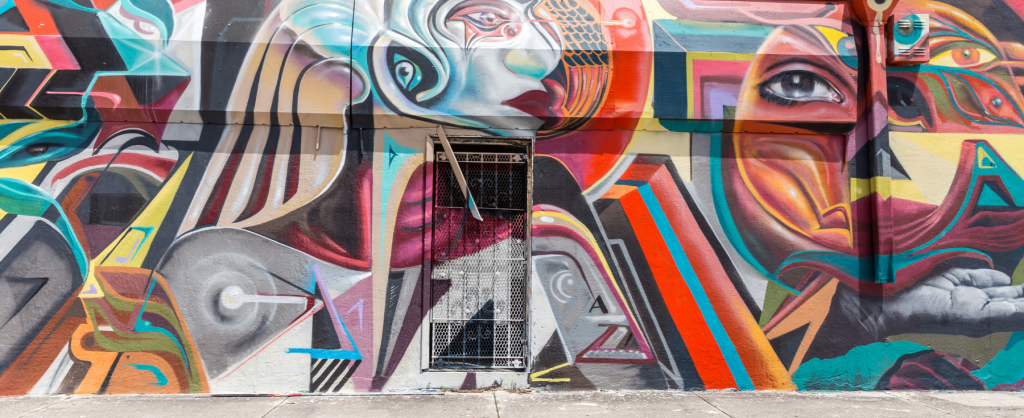
Discover Wynwood: Miami’s Most Colorful Neighborhood
Published on March 15, 2024
Wynwood is celebrated for the street art that can be found on walls throughout the Miami neighborhood. You can find six pieces made by world-renowned artists, and learn more about them, by taking our app-guided mural tour of Wynwood Adventure.
By Dave Lifton (@daveeatschicago)
In 1917, Josiah Chaille and Hugh Anderson bought farmland with the intent of developing it. The tract, immediately west of the Florida East Coast Railway tracks, had been annexed into Miami four years prior. They held a contest to determine the name of the subdivision, and the winner was Mrs. S.H. Ward, who chose “Wyndwood.” She received a parcel worth $650.
The first “d” was eventually dropped, and Wynwood was developed as a blue-collar neighborhood. Industry soon followed. By the end of the 1920s, American Bakeries had built a facility for Merita Bread, Coca-Cola had a bottling plant, and a Garment District with manufacturers, wholesalers, and retailers sprung up in Wynwood’s southwestern corner. Royal Crown Cola relocated from Atlanta to Wynwood in 1935.
After World War II, the rise of the suburbs affected cities across America. Many longtime residents moved out of Wynwood, and their places were taken by newly arrived Puerto Ricans. By the end of the ‘40s, Wynwood was being known as “Little San Juan” or “El Barrio.” In time, streets and civic institutions would be named in honor of Puerto Rican heroes and prominent members of the community.
In the ‘60s, the neighborhood suffered a blow with the construction of I-195 leading to the Julia Tuttle Causeway on Wynwood’s northern border, and I-95 through its western edge. More people were displaced, and Cubans fleeing the country following the 1959 overthrow of the Batista regime moved in, finding work in the factories in the Garment District. More immigrants from Caribbean nations, including Colombia, the Dominican Republic, and Haiti, settled in Wynwood.
Even as the local clothing industry thrived—it had become the third-largest garment district in the country with about 225 businesses—Wynwood was falling into disrepair. The neighborhood became unsafe, with unemployment at 55 percent and Roberto Clemente Park becoming an open-air drug market. The factories that had long anchored the community moved elsewhere.
As is often the case with rundown neighborhoods, help arrived in the form of artists, who could take advantage of low rents and open spaces in warehouses. In 1985, after being priced out of Coconut Grove, a group split off from the South Florida Art Center and purchased the American Bakeries building, which had been vacant for four years. They converted it into the Bakehouse Art Complex, a non-profit that, today, has more than 100 resident and associate artists in numerous disciplines.

Over the next 15 years, galleries started to make their way into Wynwood, and their move was aided by the growth of the Design District immediately north on the other side of I-195, with developers looking for cheaper options. By the early 2000’s, the vacated buildings in Wynwood were being rehabbed for artists.
The immediate success of Art Basel in 2002, across the causeway in Miami Beach, drew more attention to Wynwood. That same year, the Wynwood Business Improvement District created Art Walks on the second Saturday of every month, which brought thousands of people into the neighborhood. Spurred by the growth, construction started in 2005 on Midtown, a commercial and residential development in Wynwood’s northeast corner.
The next phase of Wynwood’s rebirth came from Tony Goldman, a real estate developer who’d helped revitalize Miami Beach more than a decade prior. In 2009, he bought up abandoned warehouses on NW 25th and 26th Streets and transformed their windowless exteriors into Wynwood Walls, an open-air museum that features dozens of murals from some of the world’s most celebrated street artists, including Shepard Fairey and Kenny Scharf.
The proliferation of street art, not just in Wynwood Walls but throughout the neighborhood, has turned it into a hip destination. The area surrounding Wynwood Walls has seen dozens of trendy restaurants, boutiques, craft breweries, and nightclubs, plus hotels and a technology sector, open up over the next 10 years.
But it’s also come at a cost. A 2021 Miami New Times article detailed that Wynwood’s success has spiked property values, and the artists—the people responsible for turning the area around—can no longer afford to live and work there. At its peak, there were 70 galleries, museums, and collections; now there are only 15, with many relocating to the Little River neighborhood two miles north of Wynwood.
Even with all the recent changes, more than 200 murals can be found throughout Wynwood, creating a vibrancy that’s unrivaled in Miami.

The Adventure starts when you say it does.
All eATLAS Adventures are designed and built by experienced eATLAS Whoa!Guides. They're always on. Always entertaining. And always ready to go.
Check out our Adventures!